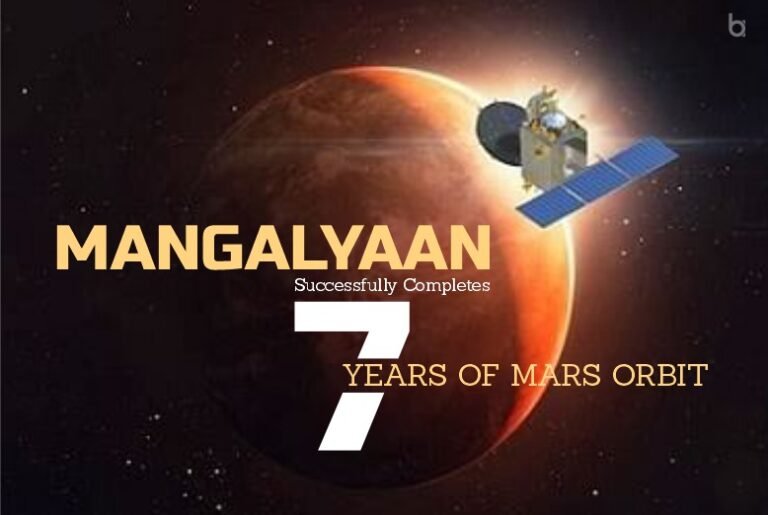Key Highlights:
- The Mangalyaan spacecraft has successfully completed seven years of orbiting around Mars
- The spacecraft entered into the Martian orbit on September 24, 2014, in the first attempt and orbiting the planet ever since
- It has covered three Martian years that is equal to six Earth years
Long Mission Life
The Mangalyaan has successfully completed 7 years of orbiting around Mars. Also called the Mars Orbiter Mission (MOM), the ‘Mangalyaan’ is a space probe orbiting Mars since 24 September 2014. It is India’s first interplanetary mission that was launched on 5 November 2013 by the Indian Space Research Organization (ISRO).
Health of the Spacecraft
The Mangalyaan was designed with a mission life of six months. However, the spacecraft has successfully completed seven years in its orbit and is expected to have a mission life of another one year. As confirmed by the ISRO scientists, the health of the spacecraft is in considerably good condition.
Remarking on its health, Program Director of Mangalyaan, M Annadurai states, “moving elements are facing some issues and some of the redundancies we have to switch over”. However, since its mission life was only 6 months, the spacecraft is in quite good condition.
According to Annadurai, the main reason behind its long mission life is because of corrections made after learning lessons from the Chandrayaan-1 venture. The improved reconfiguration of the spacecraft and efficient optimization of fuel management were some main factors.
Benefits of the Mission
ISRO has been monitoring the movements of the Mangalyaan and its five scientific instruments ever since it entered into the Martial orbit. The scientific analysis of the data received is currently being done by the ISRO scientists.
The main lessons learned during this mission were in the field of design, the realization of systems and subsystems, launch for interplanetary missions, insertion into other planet’s orbit, operation of the spacecraft, and scientific instruments around Mars orbit. These useful insights will enable India to take up future interplanetary missions.
Useful Insights from the Mission
The Mangalyaan mission has provided some great inputs on seasonal effects on Mars, and other meaningful data. Most Earth remote-sensing satellites had a mission life of seven to nine years. As opposed to this theory, Mangalyaan has helped India prove that a spacecraft can be operational around Mars as well for such a long period. The spacecraft has already covered three Martian years – where one Martian year is equal to two Earth years. Scientists have discovered and gained knowledge about how and what changes happen on Mars from one Martian year to another Martian year. There were many pictures of Mars planet captured by the Mangalyaan providing detailed information about the surface, liquid water, the atmosphere of the planet, and much more.
Also Read: 8 Indian Women Scientists And Their Rocket Ambitions



